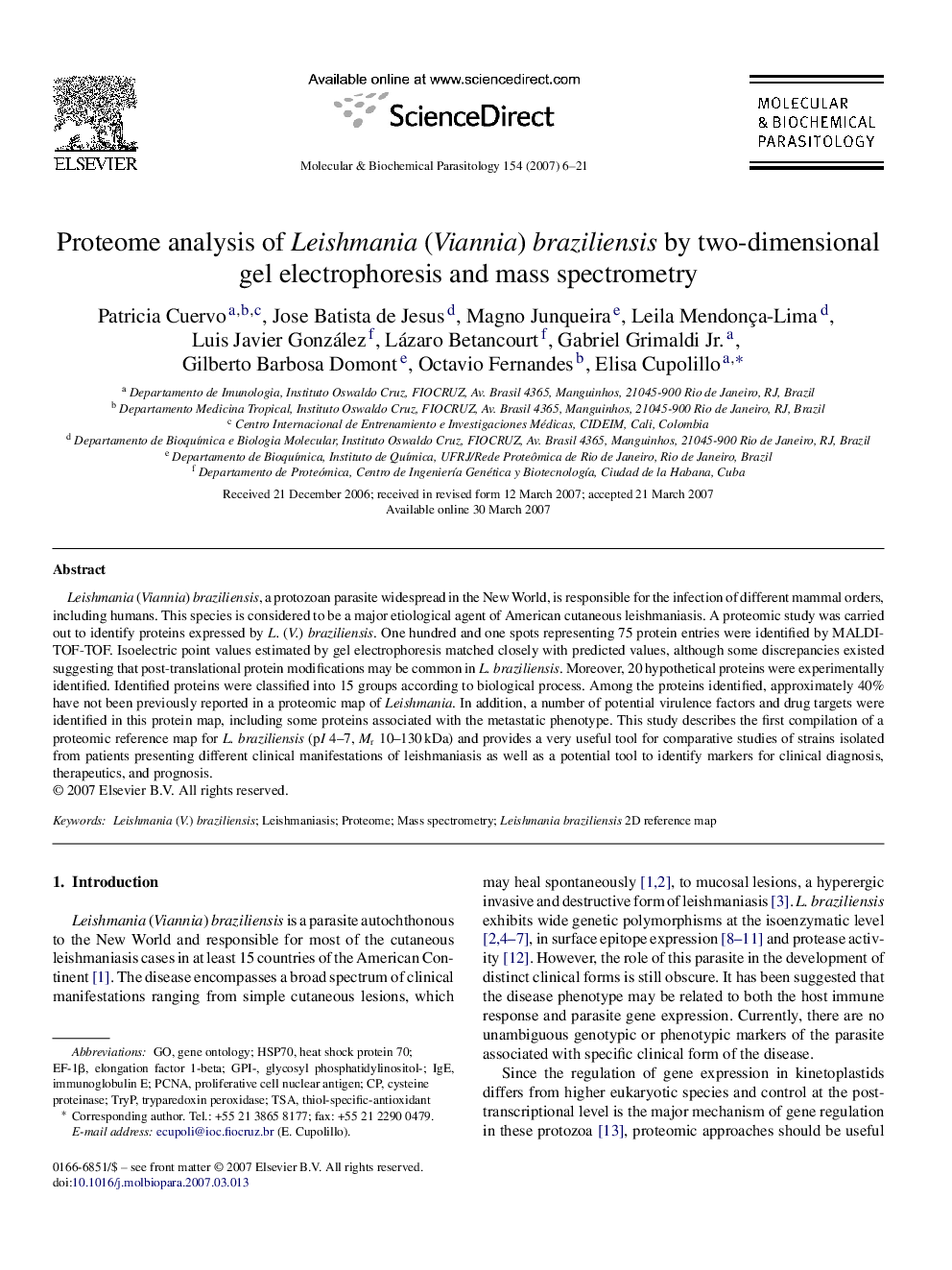| Article ID | Journal | Published Year | Pages | File Type |
|---|---|---|---|---|
| 5916089 | Molecular and Biochemical Parasitology | 2007 | 16 Pages |
Leishmania (Viannia) braziliensis, a protozoan parasite widespread in the New World, is responsible for the infection of different mammal orders, including humans. This species is considered to be a major etiological agent of American cutaneous leishmaniasis. A proteomic study was carried out to identify proteins expressed by L. (V.) braziliensis. One hundred and one spots representing 75 protein entries were identified by MALDI-TOF-TOF. Isoelectric point values estimated by gel electrophoresis matched closely with predicted values, although some discrepancies existed suggesting that post-translational protein modifications may be common in L. braziliensis. Moreover, 20 hypothetical proteins were experimentally identified. Identified proteins were classified into 15 groups according to biological process. Among the proteins identified, approximately 40% have not been previously reported in a proteomic map of Leishmania. In addition, a number of potential virulence factors and drug targets were identified in this protein map, including some proteins associated with the metastatic phenotype. This study describes the first compilation of a proteomic reference map for L. braziliensis (pI 4-7, Mr 10-130Â kDa) and provides a very useful tool for comparative studies of strains isolated from patients presenting different clinical manifestations of leishmaniasis as well as a potential tool to identify markers for clinical diagnosis, therapeutics, and prognosis.
